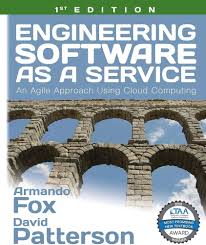This white paper explores the comprehensive phases of the Software Development Life Cycle (SDLC), modern tools and methodologies, and emerging trends such as RAG-LLM and AI agents. It emphasizes the importance of integrating AI-driven capabilities into software design and how companies like IAS-Research.com and KeenComputer.com can facilitate successful implementation.
Software Development Life Cycle (SDLC) and Digital Transformation: An Exhaustive White Paper
Abstract
This white paper presents a comprehensive examination of the Software Development Life Cycle (SDLC) in the era of digital transformation, highlighting the integration of advanced technologies such as RAG-LLM and autonomous AI agents. It explores the full scope of SDLC phases, modern methodologies, cutting-edge AI tools, and use cases across industries. It also addresses challenges, risk mitigation strategies, and the pivotal roles of IAS-Research.com and KeenComputer.com in facilitating successful software development and AI adoption.
Table of Contents
- Introduction to SDLC
- Phases of the SDLC
- Modern Methodologies and Tools
- Integration of RAG-LLM and AI Agents
- AI-Enhanced SDLC: Practical Implementation Strategies
- Use Cases Across Industries
- Challenges and Risk Mitigation
- How IAS-Research.com and KeenComputer.com Can Help
- Conclusion
- References
1. Introduction to SDLC
The Software Development Life Cycle (SDLC) is a foundational framework that guides the design, development, testing, and deployment of software systems. It ensures a structured approach to building high-quality, scalable, and maintainable software. As industries undergo digital transformation, the SDLC has evolved to embrace Agile principles, DevOps practices, and AI-enhanced automation, making it more adaptive, intelligent, and aligned with modern business needs.
2. Phases of the SDLC
2.1 Requirement Analysis
- Identifying stakeholder expectations, functional and non-functional requirements.
- Methods: User stories, stakeholder interviews, competitive analysis.
2.2 Feasibility Study
- Technical, operational, legal, and financial feasibility.
- Tools: SWOT, PESTEL, MoSCoW prioritization.
2.3 System Design
- High-level architecture and detailed design specifications.
- Tools: UML, ER diagrams, ArchiMate.
2.4 Development
- Agile sprints, iterative builds, continuous feedback loops.
- Technologies: RESTful APIs, microservices, containerization.
2.5 Testing
- Test-driven development (TDD), behavior-driven development (BDD).
- Tools: Selenium, JMeter, PyTest, Cypress.
2.6 Deployment
- Continuous Integration/Continuous Deployment (CI/CD) pipelines.
- Platforms: GitLab CI, CircleCI, Jenkins, ArgoCD.
2.7 Maintenance
- Incident response, version upgrades, security patching.
- Monitoring: Prometheus, Grafana, ELK Stack.
3. Modern Methodologies and Tools
Agile and DevOps
- Frameworks: Scrum, Kanban, SAFe.
- Tools: Jira, Trello, Confluence, GitHub Actions, Ansible.
Cloud-Native Development
- Platforms: AWS Lambda, Azure Functions, Google Kubernetes Engine.
- Benefits: Elastic scalability, high availability, service resilience.
Infrastructure as Code (IaC)
- Tools: Terraform, Pulumi, AWS CloudFormation.
- Benefits: Version-controlled infrastructure, repeatable deployments.
4. Integration of RAG-LLM and AI Agents
4.1 RAG-LLM (Retrieval-Augmented Generation)
- Combines retrieval of domain-specific content with generative capabilities of LLMs.
- Architecture: Query encoder → Vector DB → Retriever → LLM.
- Applications: Smart search, legal tech, document summarization, customer support.
4.2 AI Agents in Software Engineering
- Multi-step reasoning, dynamic task execution, and contextual awareness.
- Examples: AutoGPT, LangGraph, CrewAI.
- Features: Real-time code generation, automated documentation, multi-agent orchestration.
4.3 AI Lifecycle in SDLC
- Design: Requirement synthesis using NLP.
- Development: AI code completion, refactoring agents.
- Testing: Autonomous test case generation.
- Deployment: Predictive scaling, anomaly detection.
- Maintenance: Self-healing systems, log analysis, and feedback loops.
4.4 Tools and Frameworks
- LangChain, LlamaIndex, Haystack for RAG
- HuggingFace Transformers, OpenAI GPT, Cohere
- VectorDBs: Pinecone, Milvus, Weaviate, ChromaDB
5. AI-Enhanced SDLC: Practical Implementation Strategies
Design and Planning
- Use AI to extract insights from large requirement datasets.
- Leverage knowledge graphs for traceability.
Smart Development Environments
- Use Copilot-like tools for autocompletion.
- Automate linting, formatting, and semantic analysis.
Quality Assurance
- AI for mutation testing and coverage optimization.
- ChatGPT-based interfaces for exploratory testing.
Continuous Feedback
- AI-driven dashboards for sprint retrospectives.
- Anomaly detection for post-deployment issues.
6. Use Cases Across Industries
Healthcare
- AI agents for EMR processing, triage systems.
- RAG-LLM for synthesizing clinical guidelines.
Finance
- Regulatory compliance document processing.
- Fraud detection using behavioral AI agents.
Retail & Ecommerce
- Product recommendation engines.
- Voice-based virtual assistants.
Manufacturing
- Sensor-based anomaly detection.
- Supply chain visibility dashboards with RAG queries.
Education
- Intelligent tutoring systems.
- Automated content creation and curriculum generation.
7. Challenges and Risk Mitigation
Challenges
- Data privacy, AI hallucinations, ethical concerns.
- Legacy integration, model drift, stakeholder misalignment.
Risk Mitigation
- Model explainability (XAI), prompt engineering guidelines.
- Secure model endpoints and access control.
- CI/CD for ML (MLOps), human-in-the-loop validation.
8. How IAS-Research.com and KeenComputer.com Can Help
IAS-Research.com
- AI Engineering: Design and development of RAG pipelines, agent-based orchestration systems, and hybrid AI architectures.
- Research & Strategy: White-label research, data engineering solutions, advanced analytics consulting.
- Systems Integration: Deployment of AI/ML models into enterprise-grade applications, including compliance and observability.
KeenComputer.com
- Custom Software Development: Enterprise web platforms, mobile apps, database systems, and middleware.
- CMS & Ecommerce: High-performance WordPress, Magento, and Joomla development integrated with CRM and analytics.
- DevOps & Cloud Migration: Automated pipelines, container orchestration, and security compliance for SMBs and large enterprises.
Together, IAS-Research.com and KeenComputer.com offer full-cycle software and AI solutions, enabling businesses to future-proof their operations, reduce technical debt, and scale effectively.
9. Conclusion
The convergence of SDLC best practices with AI technologies like RAG-LLM and intelligent agents marks a new era of software innovation. Organizations that embrace AI-enhanced SDLC can achieve superior outcomes in performance, user satisfaction, and cost-efficiency. IAS-Research.com and KeenComputer.com stand as strategic enablers, providing the technical depth and operational excellence needed to thrive in this transformative landscape.
10. References
- Sommerville, Ian. Software Engineering, 10th Ed.
- Haystack.ai Documentation
- LangChain, OpenAI, HuggingFace Libraries
- IEEE Software Engineering Standards
- "RAG Applications" by HuggingFace and OpenAI
- Gartner and McKinsey Reports on SDLC and AI Adoption
- MLOps and DevOps Best Practices (AWS, Azure, GCP)
- Vector Database Design Patterns (Pinecone, Weaviate)
